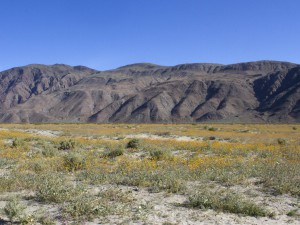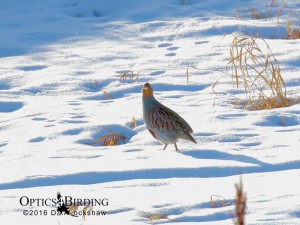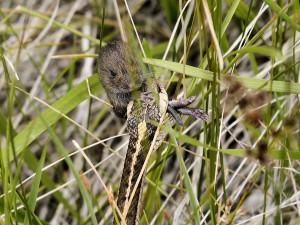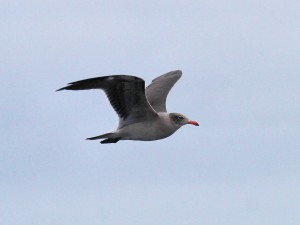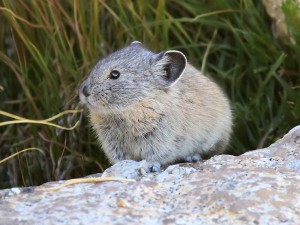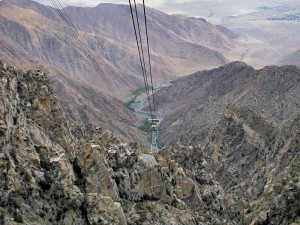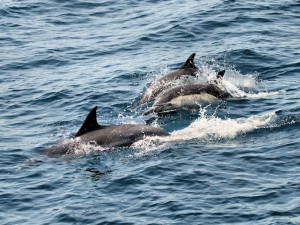On a recent birding trip to southeastern Arizona, I ran across a mammal I have long wanted to meet: the White-nosed Coatimundi, Nasua narica. Known as a coati for short, this attractive beast is a member of the raccoon family, Procyonidae, as suggested by its facial mask and faintly ringed tail. All of the world’s four coati species reside only in the Americas. Other species include the Eastern and Western Mountain Coatis, and the South American Coati. Only the White-nosed Coati occurs in the United States, where it is found from southern Arizona, across the southwest corner of New Mexico to south Texas from El Paso to the Gulf of Mexico. The White-nosed Coati?s range extends all the way through Central America into northwestern Columbia. Continue reading
Category Archives: Mammals
The Death of Planet Earth
Has mankind really driven the planet to the edge of a catastrophic crash of life? Is greed blinding us to what is right in front of our faces? Some would say maybe these claims are a little too reactionary. Okay, so a bit of Florida gets wet, and maybe some people will have to move inland. Can’t science just come up with new technologies to solve the dilemmas we face? Does industry just need to develop a practical and economical electric car? What would happen if we just did “business as usual”? The claims of doom are a bit extreme and, if we accept them at face value, they are really inconvenient to living our lives. What is science telling us about what is happening right now, what we face in the very near future, and what can be done to avoid it?
Earth really is exceptional. From our naturalist point of view, this planet’s life is unimaginably beautiful and breath-takingly diverse. But it doesn’t take a genius to see that Earth’s abundance and diversity is disappearing. There is a point at which this decline becomes mass extinction, and that point is much closer than you may think. Our own survival is indeed inextricably tied to the health of our world. If we expect science to save us, then we need to listen to what science is telling us. Continue reading
Anza-Borrego Super-Bloom
Just when you think you understand things a little, along comes an event that puts you in your place! The rainfall here on the west coast of the United States in 2017 has been a bit odd. Very welcome, to be sure, but a bit odd. We greatly exceeded expected rainfall this winter and spring. From Washington down to northern California, experts declared an official end to a drought that lasted about a decade. This refilled reservoirs and lakes in that region to capacity.
In southern California, the rain didn’t erase that long drought as completely, but it still had staggering effects locally. One factor that makes the rain so odd is that it occurred completely outside the Pacific oscillation cycle. The El Nino and La Nina events govern these oscillations. These rains at Anza-Borrego State Park produced a huge wildflower super-bloom. That greatly benefited White-lined Sphinx moths and their predators. Continue reading
Winter Birds of Calgary Canada
I took a very brief trip (5 days) to see the winter birds of Calgary Canada. I did this at the end of January and beginning of February. My primary reason for traveling to this area was to look for Snowy and Hawk Owls. In the continental United States these two owls are not very common. Small numbers usually do show up though most years in the northern states. Hawk Owl would be the most uncommon of these two species. Along with the owls, the mammals and winter birding this far north promised to offer other interesting species. These would include several that I would not find in Southern California. There would also be some that may not be very common in the lower 48 states at all.
Grey Partridges
The Grey Partridges are a pleasure to find. There were several coveys in the area. These were new to me. They are fairly common this far north although I had never seen one. I have been singing 🎼♪ “and a partridge in a pear tree” ♫ every Christmas since I was a kid. It was a pleasure to actually have a picture in my mind of what they look like. Seeing them in action was a pleasure. They seemed quite similar to our quail being in groups running around on the ground (missed any in pear trees!). I was fortunate enough to have had the opportunity to bring a pair of Zeiss Victory SF 10×42 Binoculars with me for review. For now, all I will say is “WOW, The views through these binoculars are incredible”. Continue reading
Garter Snake vs. Vole
We’ve written before about the featherless joys of birding (Desert Bighorn Sheep, Western Zebra-tailed Lizard) – those occasions when being out birding puts us in the right place to see other animals doing what they do. So on a recent Sea & Sage Audubon trip to the eastern Sierra Nevada, we were treated to the spectacle of a garter snake that had just captured a vole.
A Fall Pelagic Trip Out of Dana Point
I recently took the fall pelagic birding trip out of Dana Point Harbor. Recent sightings of a Red-billed Tropicbird in the Santa Barbara Channel gave us hope. Hurricane systems south of us off the coast of Baja suggested that the fall pelagic might produce great birds. There had been greater than usual numbers of Craveri’s Murrelets in the channel. Many people were on the boat specifically looking for that species. Plus, September is the peak of Blue Whale occurrence in the channel. We knew beforehand that cetaceans rather than birds might dominate this trip. In the end, the trip met all of those expectations. Well, except for the tropicbird… Rats! Continue reading
American Pika – unmercifully cute alpine furballs
Finding American Pika
On a quest for the American Pika (referred to below as just Pika) we recently hiked above the tree line into the alpine zone of the Sierra Nevada Mountains. We chose the high elevation region near Conness Lakes just outside Yosemite National Park for our search. Our arduous hike to almost 11,000 feet was rewarded with the bustling activity of the Pika (Ochotona princeps), preparing for the rapidly approaching winter months. Continue reading
Palm Springs Aerial Tram
During a recent visit from family, we took the famous Palm Springs Aerial Tram up to Mountain Station (see photo of Mountain Station here), the entrance to Mt. San Jacinto State Park. The ride is quite dramatic. It rises 6000 feet from a dry desert bottom to 8516 feet at Mountain Station, in under 15 minutes. The Swiss-made aerial tram cars have a rotating floor so that passengers get the full panorama during their climb without jostling for position. Once you arrive at Mountain Station, you have a choice of activities. You can visit the gift shop, catch a snack or a meal at the Peaks Restaurant. Alternatively, exit into Long Valley and take some of the hiking trails in the state park. We ended up doing all three of those. Continue reading
Summer Pelagic Trip from Dana Point
The Summer Pelagic trip out of Dana Point sponsored by Sea & Sage Audubon was last Saturday, 12-JUL-14. On Saturday, a light wind raised a bit of chop that made it unpleasant for some trip participants, even on the 70-foot R/V Sea Explorer, and it certainly made photography a bit more challenging! Getting a good, steady view of these birds can be difficult at the best of times, and an additional source of motion doesn’t help.
Conditions in the Santa Barbara Channel seldom get anywhere near as rough as those out in the open ocean. In fact, our relatively calm waters are part of what makes these quarterly Sea & Sage Pelagic trips with the boat from the Dana Point Ocean Institute so appealing. Another advantage to these trips is the vast experience of the Ocean Institute personnel, particularly Captain Mike Bursk, whose vast knowledge of all the ocean wildlife adds greatly to the experience. Continue reading
Zeiss Victory SF Experience Tour, Part 3
The next day’s Zeiss Victory SF tour activities started later in the morning. However, some of us were unwilling to let the best birding of the day slide by unused. So a few of us rose at 5:00 am to walk to reedy marshes that spread like fingers into the edge of town. What a great decision! Our first reward was a brief but definitive view of Savi’s Warbler on the marsh edge. Loudly singing its distinctive low-pitched hum of a song; easily overlooked if not focused upon.



